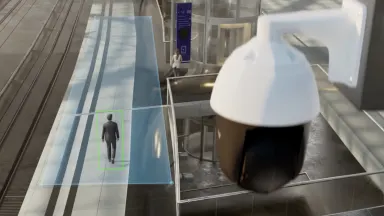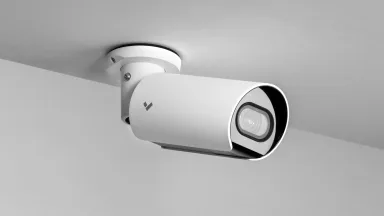
Today, we’re very proud to release our newest research, The State of Cloud Physical Security. This report, derived from a comprehensive survey conducted by The Harris Poll on behalf of Verkada, offers an in-depth look into current trends, insights, and challenges within the industry as it transitions from on-premises setups to cloud-based ones. Surveying 1,518 IT and physical security leaders across various sectors, the findings reveal a strong industry consensus favoring cloud-based systems as the future of physical security.
Download the full State of Cloud Physical Security report.
Key Insights and Trends
Growing consensus on cloud-based future
An impressive 92% of security leaders agree that the future of physical security lies in cloud-based solutions. This widespread agreement highlights the strategic shift towards greater scalability, real-time alerting, and AI capabilities that cloud solutions offer.
“We can remotely monitor and manage security equipment through the cloud platform without having to go to the site in person. This is very beneficial for cross-regional or distributed businesses, which can reduce labor and time costs and improve work efficiency.” – Survey respondent on the day-to-day impact of cloud-based physical security systems
High transition intentions
86% of respondents who have not yet fully transitioned to the cloud are planning to do so, with 90% of those with fully on-premise setups and 85% with hybrid systems expressing intentions to migrate, demonstrating clear momentum towards cloud adoption.

Urgent adoption timeline
Notably, 7 in 10 respondents expect to increase their spending on physical security systems in 2025, which aligns with the finding that 75% of security leaders are planning to transition to the cloud within the next 12 months, with 96% aiming to complete this transition within the next 18 months. This urgency reflects the pressing need to modernize physical security infrastructures.
“The IT department I'm responsible for has significantly reduced O&M [Operations and Maintenance] costs by introducing a cloud-based physical security system, while at the same time enhancing our security protection.” – Survey respondent on the impact of cloud-based physical security systems on budgets and operational efficiency
The Factors Driving Cloud Adoption
Top drivers of adoption
The primary factors driving the transition to cloud-based systems include features that enable organizations to quickly adapt to changing security demands and efficiently manage their infrastructure, including:
System scalability
Remote management
Seamless device integration
Changing attitudes on cybersecurity
Cybersecurity remains the most significant concern for organizations looking to transition. However, the overwhelming majority (9 in 10) believe that cloud security has improved over the past five years and will continue to do so over the next half-decade. This optimism is based on the enhanced protection against emerging threats that modern cloud security offers.
“By adopting advanced encryption technology and security protocols, the cloud-based physical security system ensures that our data is fully protected during transmission and storage, effectively guarding against risks such as data leakage and illegal access.” – Survey respondent on the impact of cloud-based physical security systems on data security
Strategic importance of AI
Artificial intelligence (AI) is becoming a crucial component of cloud-based security systems. AI-driven features, such as video analytics and predictive modeling, empower security teams to proactively detect potential threats, and the integration of AI is seen as essential for maintaining a robust and proactive security posture.
“Cloud infrastructure provides more data analysis and intelligent functions, which has helped us better understand and predict security risks.” – Survey respondent on the impact of AI-enabled cloud-based physical security systems

The Future of Physical Security
The main takeaway from security leaders is clear: the future of physical security is cloud-based. This transition is not merely a technological upgrade but a strategic move towards future-proofing organizations against evolving security threats. With the integration of AI, advanced analytics, and predictive modeling, cloud-based systems offer centralized management, reduced manual tasks, and optimized security resource utilization across geographically diverse regions.
Download the full report
For a more detailed analysis, and to explore all the insights from our survey, download the full State of Cloud Physical Security report now.






